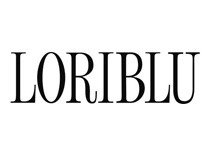Loriblu
Bags / Fragrance / Shoes
The Loriblu brand bears a history of challenges and achievements. The company has been started in the early Seventies by Graziano Cuccù, the stylist of every collection. Since he was young, design...
The Loriblu brand bears a history of challenges and achievements. The company has been started in the early Seventies by Graziano Cuccù, the stylist of every collection. Since he was young, designing and inventing new women’s shoes has always been Graziano’s greatest passion, and starting a company represented the very best way to put into action his goals. He started producing the first models in his house’s garage, undertaking a path that slowly led him to expand his activities all over the world. The Mignon (an extremely feminine shoe that develops from simple little woven stripes of leather) became his first successful style, followed by the Jewel Sandal in the’80’s and ‘90’s that constitutes a Loriblu must-have to this day. Rhinestones, crystals and precious Swarovski Elements gems give life to a very charming and chic style, very lively but also sophisticated at the same time, highly appreciated by international and Italian celebrities. 1994 is the year in which Annarita Pilotti - Graziano’s wife – joins the company, expanding its business towards a more international range. In the last few years, the Loriblu brand has remarkably widened thanks to a thorough stylistic research and product innovation, while firmly maintaining the Marche-based shoe making tradition. Throughout the years, the Man collection and a Luxury Shoes Limited Edition collection have been introduced and several mono-brand shops have been opened, with an eye carefully kept on the future.Brand Details
Founder
Graziano Cuccù
Brand Strategy
Market segment
Premium
Core business
Shoes
Targets
Men, Women
Loriblu Financial Report 2024
Last fiscal year ended on December 31, 2015
